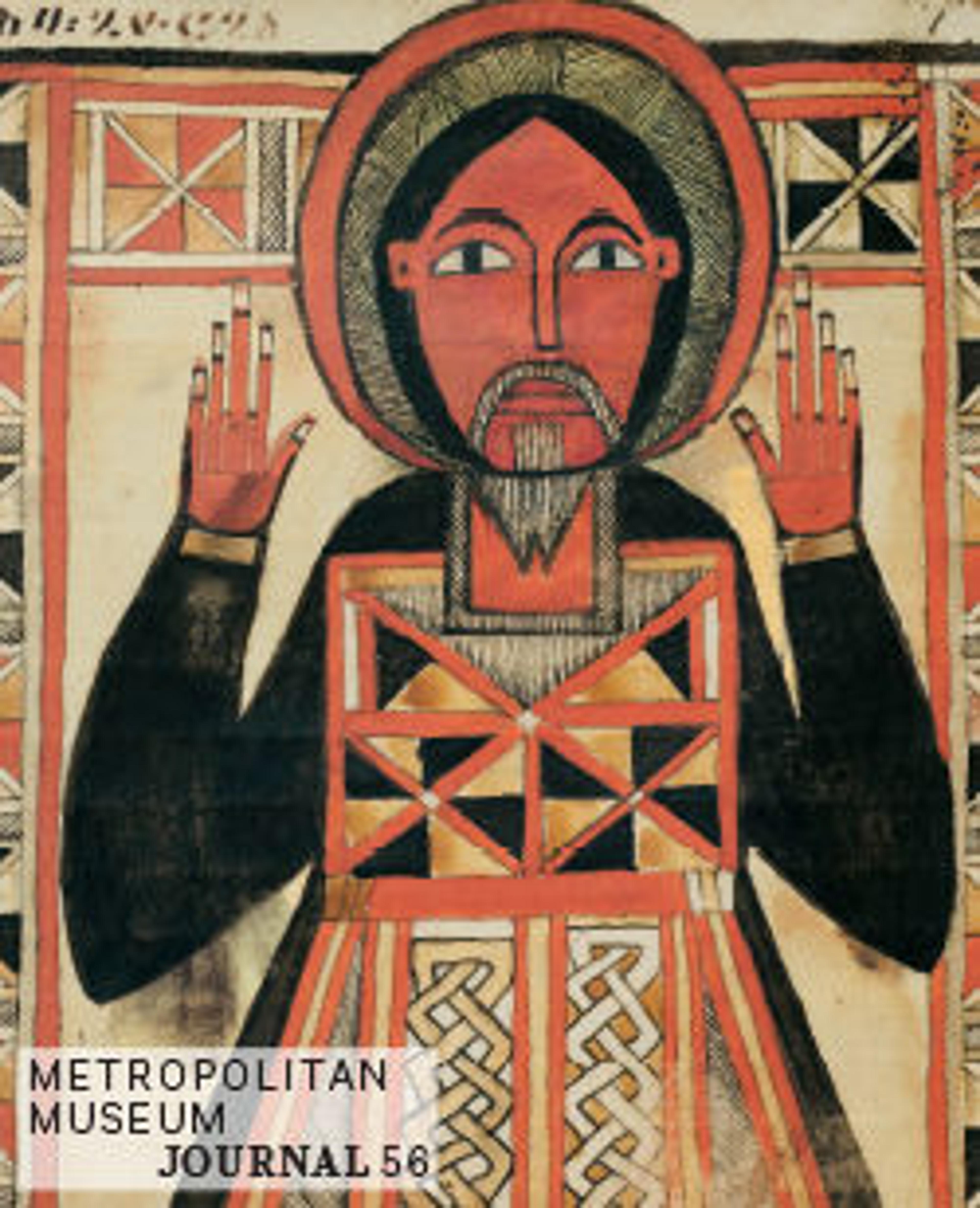Standard bearer
Wearing a simple loincloth tied in front in a prominent knot, this strong male figure is seated on a massive block. The elaborate lashings of his sandals suggest that he is an individual belonging to a high social class, since commoners in Aztec society went mostly barefoot. The facial contours are rounded and soft, and there is a slight frown on the forehead; his mouth is half open as if speaking. His almond-shaped eyes once held inlays. The curved, deeply grooved line across the top of the face indicates the hairline, but the head itself is smooth with no striations to indicate hair. The man's upper body leans slightly forward, and the knees are held close against the chest. His left hand, carved in relief, rests on the left knee, while the right, now damaged, is a hollow fist supported by his right knee. Because of the position of the right hand, the figure has been called a "standard bearer" of the kind often placed at the top of a temple pyramid stairway holding standards tipped with banners.
The sculpture comes from the town of Castillo de Teayo in northern Veracruz, where a temple pyramid and a number of sculptures were discovered in 1903. The sculptures are carved in a provincial version of the metropolitan Aztec style.
The sculpture comes from the town of Castillo de Teayo in northern Veracruz, where a temple pyramid and a number of sculptures were discovered in 1903. The sculptures are carved in a provincial version of the metropolitan Aztec style.
Artwork Details
- Title: Standard bearer
- Artist: Mexica or Veracruz artist(s)
- Date: 1200–1521 CE
- Geography: Mexico, Mesoamerica, Veracruz
- Culture: Mexica
- Medium: Sandstone
- Dimensions: H. 31 11/16 × W. 13 7/16 × D.13 1/16 in. (80.5 × 34.1 × 33.1 cm)
- Classification: Stone-Sculpture
- Credit Line: Harris Brisbane Dick Fund, 1962
- Object Number: 62.47
- Curatorial Department: The Michael C. Rockefeller Wing
More Artwork
Research Resources
The Met provides unparalleled resources for research and welcomes an international community of students and scholars. The Met's Open Access API is where creators and researchers can connect to the The Met collection. Open Access data and public domain images are available for unrestricted commercial and noncommercial use without permission or fee.
To request images under copyright and other restrictions, please use this Image Request form.
Feedback
We continue to research and examine historical and cultural context for objects in The Met collection. If you have comments or questions about this object record, please contact us using the form below. The Museum looks forward to receiving your comments.
